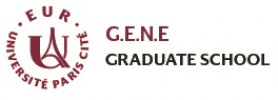© Pint of Science, 2025. All rights reserved.
By smashing particles against each other in giant accelerators, physicists have discovered new building blocks of matter. But astronomers have raised the bar! Apparently, we know only about 5% of the Universe, and see less than 1% in stars. Oh, and did antimatter really disappear or does it antigravitate? Let's try to solve these mysteries around a pint of anti-anti-beer.
The smallest bits of the Universe that do matter!
Marco Bomben
(Maitre de conférence, Astroparticles and Cosmology lab, Université Paris Cité)
The atomists knew it 25 centuries ago: matter is made of tiny building blocks. In 1897, J. J. Thomson discovers the electron by accelerating an ionized gas. After that moment, the size of accelerators and the knowledge of the fundamental bricks of the Universe never stopped increasing. Marco Bomben will try to explain why we accelerate particles and how many we have found so far. Many examples will be taken from the history of CERN, the European laboratory of particle physics founded in 1954, which is the "center of gravity" of his research activity on silicon particle detectors.
Does antimatter fall up?
Gabriel Chardin
(researcher, Astroparticles and Cosmology lab, CNRS)
The standard model of cosmology states that 95% of the composition of the Universe is made of Dark Matter and Dark Energy, two mysterious and largely unobserved components. Could it be that the repulsive gravity observed in our Universe is in fact due to a « negative mass » component, created by antimatter, which would have survived in large cold clouds and would mimic Dark Matter? Gabriel Chardin will discuss the various ways to test this hypothesis, ultimately tested at CERN in three experiments aiming at measuring the action of Earth gravity on cold antihydrogen atoms.
© les contributeurs OpenStreetMap


